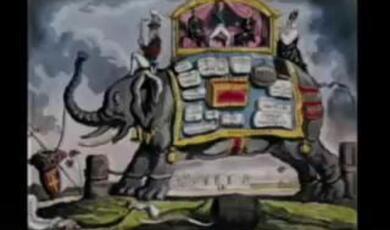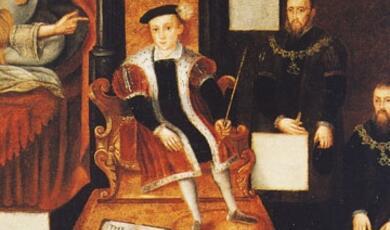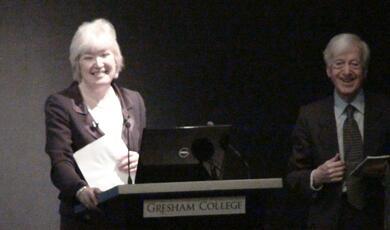Why Is There Only One Species of Human?
Share
- Details
- Text
- Audio
- Downloads
- Extra Reading
We are the only human species on the planet today. But for most of our history we have not been alone.
Fossil and genetic evidence has revealed a diverse and fascinating set of human-like species, from Neanderthals to Denisovans, to Homo Floresiensis (The Hobbit) and more.
We’ll meet many of them in this lecture, investigate why they died out and reveal why some of them are much closer relatives than you might think.
Any Further Questions? Podcast
Listen to our follow-up podcast with Professor May via the Audio tab or on Spotify & Apple
Download Text
Why is there only one species of human?
Professor Robin May
10 January 2024
The world is populated by an estimated 5-10 million species of animal and plant. Often, an ecological niche is home to two or more species that are closely related. Such ‘sibling species’ are frequently indistinguishable to the human eye and yet remain as two distinct populations due to subtle differences in behaviour or courtship patterns.
Humans, though, are alone. Homo sapiens is the only species within the genus and, as far as we know, our closest living cousins are chimpanzees and bonobos, rather than another bipedal naked ape. Why?
Are we really alone?
Perhaps the first question is whether we really are such a lonely species? Even in the 21st century, almost a quarter of the world’s land surface remains classed as ‘wilderness’, so perhaps a human sibling species might be lurking, undiscovered, somewhere? Although a theoretical possibility, the odds are heavily stacked against it. Most ‘wilderness’ areas still experience occasional human contact, so it seems unlikely that a second human-like species could remain undetected. And the few areas of the globe that are truly unexplored are typically frozen deserts, icy mountain tops or underwater canyons – not habitats that are compatible with the likely physiology of another species of Homo.
An alternative theoretical possibility is that what we perceive to be a single species of human might in fact consist of two or more species. A visiting alien might well look at the fantastic variety within the human population and assume that they are looking at a blend of different species, given the remarkable range of shapes, sizes, colours and cultures that are on display. Indeed, early European explorers frequently wondered aloud whether indigenous populations were “equivalent creatures”; a pseudoscientific view that was subsequently used to try and justify the horrors of the trans-Atlantic trade in enslaved people, or the barbaric genocide inflicted upon native Americans. However, even at the time that these gross injustices were being inflicted on indigenous communities, it was already abundantly apparent that all humans are members of the same species. Individuals from different groups were able to reproduce without barriers and could adapt rapidly to different cultural norms, facilitating rapid integration between groups that had been geographically and genetically separate for thousands of years.
What, then, of our nearest non-human cousins, the great apes? Genetic analysis has revealed the remarkable similarity between humans and our closest neighbours, the chimpanzees and bonobos, with around 98% genome similarity. However, the remaining 2% difference is still five times more than the average difference between any two humans (which ranges from 0.1-0.4%) or the difference between chimps and bonobos (0.4%). So, whilst bonobos and chimpanzees are clearly sibling species, humans nonetheless stand apart from this group.
Have we always been alone?
Until relatively recently, the apparent isolation of Homo sapiens fitted well with religious creation accounts – humans were ‘special’ and unique, set apart from all other living organisms. However, as the theory of evolution became widely accepted in the latter half of the 19th century, people began to question why other species diversified over time, and yet humans apparently did not. Ancient human remains were occasionally unearthed during quarrying activities, but at best these were typically described as ‘archaic humans’. Then in 1856, a German schoolteacher, Johann Fuhlrott, suggested that a skull recently discovered in the Neander Valley belonged to a species that was distinct from modern humans. Subsequent analysis suggested that earlier skeletal remains from other sites, previously attributed to modern Homo sapiens, were in fact more similar to this new specimen, forming a group that we now know as the Neanderthals. Although the extent to which Neanderthals are a completely separate species from modern humans remains unclear, this was nonetheless the first clear evidence that multiple, biologically distinct groups of Homo species had coexisted relatively recently.
For almost forty years, Neanderthals remained as the sole example of a now-extinct hominin. Then, in 1894, the Dutch anatomist Eugene Dubois published a report documenting the discovery of skeletal remains in what was then the Dutch East Indies. Although Dubois described this specimen as an extinct ape, giving it the name Pithecanthropus erectus, the same specimen was later recognised as a distinct species, ancestral to modern humans – Homo erectus.
The final piece of the puzzle arrived in 1907 with the discovery of a human-like jawbone in a German quarry. Otto Schoetensack, a wealthy industrial chemist-turned-palaentologist, correctly identified this as a separate species, naming it Homo heidelbergensis. Consequently, by the time that the world was plunged into the chaos of World War I, it was clear that the solitary position of Homo sapiens was a relatively recent event in evolutionary history, rather than a fundamental feature of human ancestry.
What happened to the other hominis?
We now know of at least three other species of hominin that coexisted with modern Homo sapiens in the recent past. The most plausible model based on current evidence suggests that an ancient hominin, most likely Homo heidelbergensis, spread from Africa across to Europe and then onwards to Asia. Once there, H. heidelbergensis diversified into H. neanderthalensis (Europe) and the enigmatic Denisovans in Asia. At the same time, the diminutive species H. floresiensis was present on the island of Flores in what is now Indonesia, although it remains unclear whether H. floresiensis evolved directly from H. heidelbergensis or via some other intermediate species.
In the meantime, the resident H. heidelbergensis population in Africa continued to evolve and, by 300,000 years ago, fossils that we recognise as anatomically modern H. sapiens appear in what is now Morocco, with similar remains appearing in more recent fossil layers in South Africa and Ethiopia.
Relatively soon after they had evolved in Africa, modern H. sapiens started to migrate to Europe – perhaps as a result of changing climate. From there, they moved onwards towards Asia, the Middle East and ultimately Polynesia and Australia, colonising most of the world within a relatively brief period 40-60,000 years ago.
This time window coincides almost exactly with the disappearance of all of the other hominin species. The youngest Neanderthal specimen known dates from 38,000 years ago, and the fragmentary Denisovan and Floresian remains from around 50,000 years ago. This temporal alignment initially led some researchers to suggest that these older groups were exterminated by the technologically superior modern humans. However, thus far no evidence for violent eradication has been found. Instead, the most plausible model suggests that these ancient hominin species were driven to extinction by a combination of a changing climate, the emergence of novel pathogens (perhaps ‘imported’ by the dispersing H. sapiens) and competition with this new species of hominin. Whilst recent findings have comprehensively demonstrated that Neanderthals were capable of producing and using tools, there is little evidence for the kind of advanced intellectual activity that was associated with anatomically modern humans – including the production of remarkable ‘artwork’ like the striking ‘Lion Man’ sculpture that dates to 40,000 years ago – suggesting that modern humans would most likely have had significant technological and cultural advantages, enabling them to outcompete resident archaic hominins.
Not quite dead yet…
Today, the overwhelming weight of fossil evidence suggests that modern humans have been the only hominin on the planet for almost the last 40,000 years. However, the legacy of the Neanderthals, Denisovans and perhaps other Homo species has not been entirely lost. One of the biggest scientific revolutions of modern paleontology has been the ability to retrieve and sequence DNA from ancient fossil material – a technology pioneered by the Swedish geneticist Svante Paabo, for which he was awarded the Nobel prize in 2022.
In 2010, this approach turned the field of anthropology upside down when it produced a full genome sequence from not one but two hominin species – Neanderthals, and the previously-unknown Denisovans. The most remarkable finding, however, was that segments of both genomes could be found in individual humans living today – clear evidence that both Neanderthals and Denisovans must have coexisted and interbred with anatomically modern humans. Since then, the massive expansion in human genome sequencing has revealed these ancient relationships in exquisite detail. Indeed, we now know that most Europeans inherited around 2% of their genome from Neanderthals, whereas individuals whose lineage is entirely African do not have these genetic loci. And many people in Asia, particular in Polynesia, have inherited an additional 3-5% of their genome from ancestral interbreeding with Denisovans.
The fact that we have thus far only managed to successfully sequence DNA from two extinct hominin species, and yet both are represented in extant human genomes, suggests that such interactions were remarkably common during our evolutionary history. Given that, who knows what future discoveries of fossil material, or more advanced DNA sequencing techniques, may reveal? Either way, it is now clear that Homo sapiens may be the only human species on the planet today, but we are nonetheless not really ‘alone’…
© Professor Robin May, 2024
Part of:
This event was on Wed, 10 Jan 2024
Support Gresham
Gresham College has offered an outstanding education to the public free of charge for over 400 years. Today, Gresham College plays an important role in fostering a love of learning and a greater understanding of ourselves and the world around us. Your donation will help to widen our reach and to broaden our audience, allowing more people to benefit from a high-quality education from some of the brightest minds.


 Login
Login







